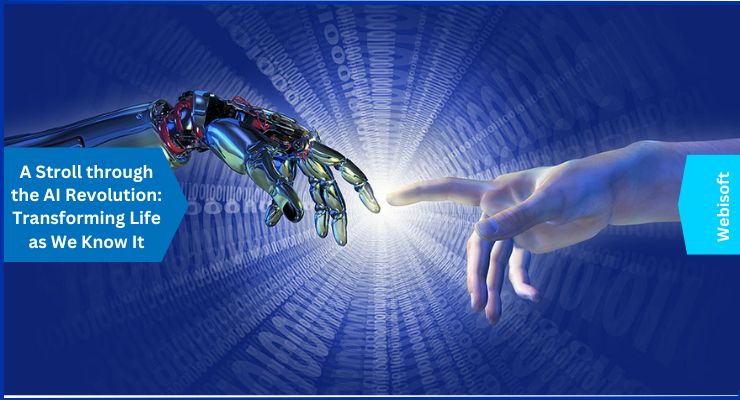The Listener in Your Living Room is Becoming a Lifesaver
For years, the smart speaker has been a convenient, voice-activated hub for our daily lives. We ask it for the weather, command it to play our favorite songs, set timers for cooking, and control the lighting in our smart homes. It’s a digital butler, an entertainer, and an information source rolled into one. However, a profound transformation is underway, quietly unfolding within the silicon hearts of these ubiquitous devices. The latest developments in AI Audio / Speakers News reveal a shift from simple command-and-response to sophisticated, passive health monitoring. The very sounds of our lives—our coughs, our speech, the rhythm of our breathing—are becoming a new frontier for proactive healthcare.
This evolution is powered by advanced artificial intelligence models capable of analyzing audio data with a precision that far surpasses human hearing. These AI systems can identify subtle acoustic biomarkers hidden within everyday sounds, potentially flagging early signs of respiratory illnesses, neurological conditions, and even shifts in mental wellness. This isn’t science fiction; it’s the cutting edge of Health & BioAI Gadgets News, promising to turn our homes into the first line of defense for our health. This article delves into the technology behind this revolution, explores its real-world applications, confronts the critical challenges of privacy and accuracy, and looks ahead to a future where our health is monitored as seamlessly as our smart home is managed.
The Sonic Biomarker: How AI Hears What We Can’t
At the core of this technological leap is the concept of the “sonic biomarker”—a measurable, quantifiable characteristic in sound that can indicate a specific biological state or disease. While a doctor might listen to a patient’s breathing with a stethoscope, AI can perform a similar, yet vastly more detailed, analysis on the ambient sounds captured by a microphone. This is where the intersection of audio engineering and machine learning is creating unprecedented opportunities.
From Sound Waves to Health Data
When you speak, cough, or even breathe, you produce complex sound waves. An AI model doesn’t just “hear” these sounds; it deconstructs them into a rich tapestry of data points. The process begins with feature extraction, where raw audio is converted into a machine-readable format. This can involve analyzing fundamental frequencies, pitch variations (jitter), amplitude fluctuations (shimmer), and harmonic-to-noise ratios. More advanced techniques involve creating spectrograms—visual representations of the spectrum of frequencies in a sound as they vary with time. These images allow powerful AI models, typically used for image recognition, to “see” the unique signatures of different sounds.
For example, a dry, persistent cough has a different spectrogram signature than a wet, productive one. The subtle strain in the voice of someone with early-stage Parkinson’s disease, imperceptible to the human ear, can manifest as a distinct pattern of vocal tremor that an AI can flag. This level of detail is a game-changer for AI Monitoring Devices, moving them from reactive gadgets to proactive health partners.
The Technology Under the Hood
The AI driving this analysis is primarily based on deep learning, a subset of machine learning. Two types of neural networks are particularly effective:
- Convolutional Neural Networks (CNNs): Originally designed for image analysis, CNNs are exceptionally good at finding patterns in spectrograms. They can learn to identify the unique visual textures of coughs associated with conditions like asthma, pneumonia, or bronchitis. This technology is a key component in the latest AI-enabled Cameras & Vision News, and its application to audio is a brilliant example of cross-disciplinary innovation.
- Recurrent Neural Networks (RNNs) and Transformers: These models excel at understanding sequences and context over time. They are ideal for analyzing speech patterns, breathing rhythms, or the progression of a coughing fit. They can detect hesitations, changes in speech rate, or respiratory distress patterns that unfold over several seconds.
Training these models requires massive, diverse datasets containing labeled audio samples from thousands of individuals, both healthy and with diagnosed conditions. The quality and breadth of this data are paramount to building an accurate and unbiased system. Furthermore, a key trend in AI Edge Devices News is the push to run these complex models directly on the smart speaker or smartphone. On-device processing, or edge computing, significantly enhances privacy by ensuring sensitive audio data is analyzed locally without ever being sent to the cloud, a critical factor for user trust and adoption.

Real-World Applications: From the Living Room to the Clinic
The theoretical potential of audio AI is rapidly translating into tangible, life-altering applications. By integrating these capabilities into everyday devices, we can create a seamless health monitoring net that operates in the background of our lives, offering insights that were previously only available through clinical visits.
Early Disease Detection and Monitoring
The most prominent application is in the early detection of respiratory illnesses. An AI-powered smart speaker could passively monitor the sounds in a home and, upon detecting a persistent cough, analyze its acoustic properties. It could potentially distinguish between a benign throat-clearing and the specific signature of a condition requiring medical attention. Imagine receiving a notification on your phone: “A cough consistent with early signs of bronchitis has been detected. You may want to consider speaking with a healthcare professional.” This is the future of AI Phone & Mobile Devices News, where your devices work in concert for your well-being.
This extends far beyond coughs. Nightly analysis of breathing and snoring patterns can be a highly effective screening tool for sleep apnea, a common but seriously underdiagnosed condition. The latest AI Sleep / Wellness Gadgets News highlights devices that can track respiratory rate and detect apneic events purely through sound, offering a non-invasive alternative to clinical sleep studies. For chronic conditions like asthma or COPD, continuous audio monitoring can track disease progression and even predict exacerbations before the patient feels severe symptoms, allowing for timely intervention.
Mental and Emotional Wellness
The human voice is a powerful indicator of emotional state. AI models can analyze prosody—the rhythm, stress, and intonation of speech—to infer levels of stress, anxiety, fatigue, or depression. While not a diagnostic tool on its own, this capability, when integrated into AI Assistants News, could lead to more empathetic and helpful interactions. An AI assistant that detects heightened stress in your voice might proactively suggest a 5-minute meditation, play calming music, or adjust the ambient lighting via AI Lighting Gadgets News. This transforms the AI from a simple task-doer into a true companion, making it a key topic in AI Companion Devices News.
Expanding the Scope: Accessibility and Beyond
The applications for vocal biomarker analysis are vast. In the realm of AI for Accessibility Devices News, it can provide critical tools for patients with neurological disorders. By tracking subtle degradation in speech clarity, volume, and control, AI can help monitor the progression of diseases like Parkinson’s, ALS, or Multiple Sclerosis, providing valuable data for clinicians to adjust treatment plans. This same technology is also being explored in other domains, from Autonomous Vehicles News, where it could detect driver drowsiness from speech patterns, to AI Security Gadgets News, where audio analytics can identify the sound of breaking glass or a smoke alarm and trigger an alert.
Navigating the Challenges: Privacy, Accuracy, and Ethics
The promise of turning every microphone into a health sensor is immense, but it comes with a formidable set of challenges that must be addressed responsibly. The path to widespread adoption is paved with complex considerations around data privacy, clinical accuracy, and algorithmic fairness. Failing to navigate these issues could erode public trust and hinder the technology’s potential for good.
The “Always-On” Dilemma: Privacy and Data Security

The most significant hurdle is privacy. The idea of an “always-on” microphone in our most private spaces is understandably unsettling. For this technology to be accepted, manufacturers must prioritize a privacy-first design. As mentioned, on-device processing is a cornerstone of this approach. By keeping raw audio and derived health insights on the local device, the risk of cloud-based data breaches is minimized. Transparent user consent is also non-negotiable. Users must have clear, granular control over what is being monitored, when it’s being monitored, and how that data is used. Secure data encryption, both on the device and in transit (if data sharing with a doctor is enabled), is an absolute requirement, placing this topic at the forefront of AI Sensors & IoT News.
The Quest for Clinical-Grade Accuracy
A health monitoring tool is only as good as its accuracy. A false positive—telling a healthy person they might be sick—can cause unnecessary anxiety and strain healthcare resources. A false negative—missing a real sign of disease—can create a dangerous false sense of security. Before any device can make health-related claims, it must undergo rigorous testing and validation against clinical standards, likely requiring approval from regulatory bodies like the FDA. A common pitfall will be the marketing of these features. It must be made explicitly clear to consumers that these are screening or monitoring tools, not diagnostic replacements for a qualified medical professional. The goal is to augment, not replace, traditional healthcare.
Ethical Considerations and Algorithmic Bias
AI models are trained on data, and if that data is not representative of the entire population, the model can become biased. An algorithm trained predominantly on adult male voices from North America may perform poorly when analyzing the speech of women, children, or individuals with different accents. This could lead to health inequities, where the technology works well for some demographics but fails others. Researchers and developers, a key focus of AI Research / Prototypes News, have an ethical obligation to build and test their models on diverse, inclusive datasets to ensure they are fair and effective for everyone. Addressing bias is not just a technical challenge; it’s a moral imperative for the future of Health & BioAI Gadgets News.
The Future Soundscape: Integration and Convergence
The future of AI-driven health monitoring is not about a single, all-powerful gadget. Instead, it lies in the seamless integration of multiple data streams to create a holistic, multi-modal understanding of our well-being. Audio analysis will be a powerful piece of a much larger puzzle, converging with other smart technologies to create a truly intelligent and responsive health ecosystem.

A Multi-Modal Approach to Health
Imagine a future smart home where your speaker’s audio analysis works in concert with other devices. The system might correlate a detected wheezing sound with air quality data from an indoor AI Sensor & IoT News monitor. It could combine the detection of lethargic speech patterns with data from your fitness wearable, covered in Wearables News, which shows a decrease in activity and elevated resting heart rate. This fusion of data from AI-enabled Cameras & Vision News (observing gait and posture), Smart Appliances News (tracking dietary habits), and audio sensors provides a rich, contextualized view of your health that is far more powerful than any single data point. This integrated ecosystem is the ultimate vision for Smart Home AI News.
From Smart Speakers to Ubiquitous Listening
While smart speakers are the initial platform, this technology will soon be embedded in nearly every device with a microphone. Your smartphone will become a powerful pocket health screener. The latest Smart Glasses News suggests future models will analyze your speech in real-time. Even niche areas like AI Pet Tech News are exploring how audio analysis can monitor a pet’s vocalizations for signs of pain or distress. This ambient, ubiquitous listening capability, when managed with strict privacy controls, will make health monitoring a continuous and effortless part of our environment, moving from a deliberate action to an automatic background process.
Conclusion: Listening to the Future of Health
We are standing at the threshold of a new era in personal health technology. The smart speakers and audio devices that we welcomed into our homes for convenience and entertainment are evolving into sophisticated, non-invasive health guardians. By leveraging the power of AI to decode the hidden health information in our voices, coughs, and breathing, this technology promises to provide early warnings, monitor chronic conditions, and offer insights into our overall well-being.
The journey ahead requires a careful and considered approach. Overcoming the immense challenges of privacy, ensuring clinical-grade accuracy, and building ethically sound, unbiased systems will be paramount to earning public trust and realizing this technology’s full potential. If we can successfully navigate these complexities, the future of AI Audio / Speakers News will be synonymous with the future of proactive, personalized, and accessible healthcare—a future that is not just seen or felt, but heard.










